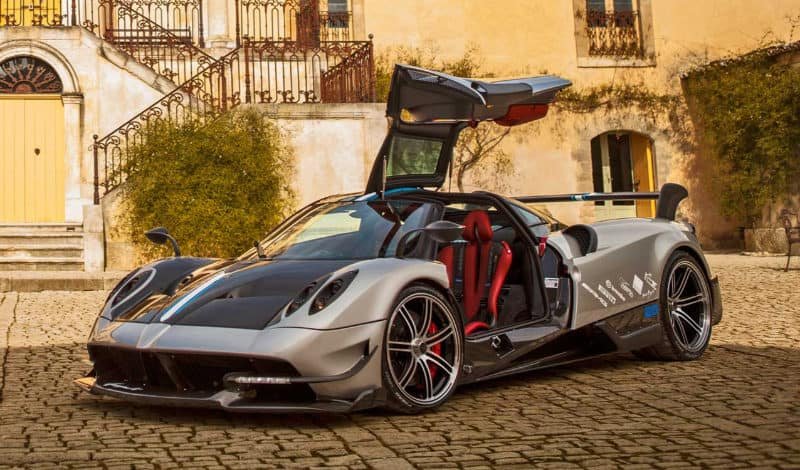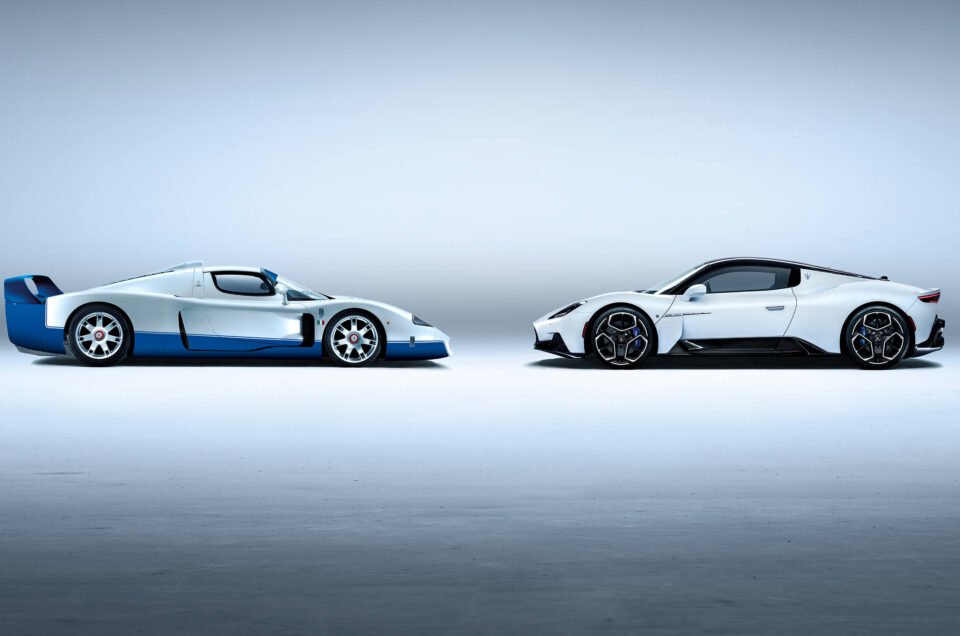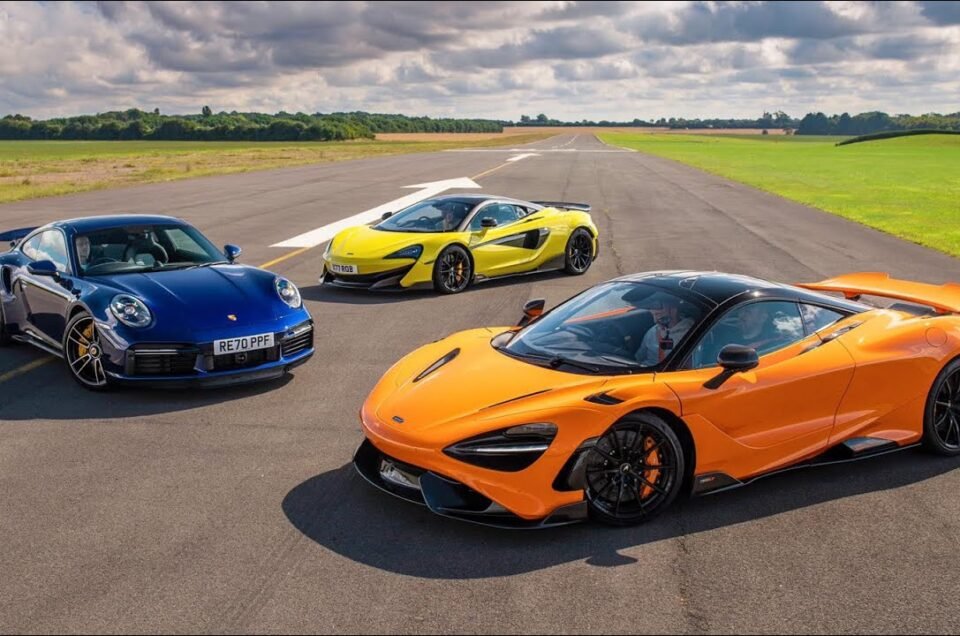Introduction to Luxury Cars
The allure of luxury cars is undeniable, captivating the imagination of collectors and automotive enthusiasts alike. These high-end vehicles embody unparalleled exclusivity and sophistication, often seen as the ultimate status symbols in society. The luxury car market is a realm where artistry and engineering merge, offering cars that are not only modes of transportation but also masterpieces in their own right.
One of the key factors contributing to the high costs of luxury cars is the advanced technology integrated into these vehicles. Cutting-edge features, including top-of-the-line infotainment systems, adaptive cruise control, and autonomous driving capabilities, set these cars apart from their more conventional counterparts. Additionally, the incorporation of state-of-the-art safety systems ensures that the driving experience is not only luxurious but also secure.
The use of premium materials further elevates the desirability of luxury cars. From opulent leather interiors and exotic wood trims to carbon fiber components, every element is carefully selected to offer the highest level of comfort and style. These materials are not only chosen for their aesthetic appeal but also for their performance benefits, contributing to the overall driving experience.
Bespoke craftsmanship is another significant factor that justifies the extravagant price tags of these vehicles. Many luxury car manufacturers offer customization options that allow buyers to tailor their cars to their exact specifications. Whether it’s custom paint finishes, personalized embroidery, or unique tire designs, the level of detail and personalization available is virtually limitless. This level of bespoke service ensures that each car is truly one of a kind, enhancing its value and appeal.
In essence, luxury cars represent the pinnacle of automotive engineering and design. Their high costs are a reflection of the relentless pursuit of perfection, combining advanced technology, premium materials, and bespoke craftsmanship to create vehicles that are not just cars, but experiences. As symbols of prestige and exclusivity, they continue to fascinate and captivate those with a passion for the finer things in life.
Current Holder of the Title: Bugatti La Voiture Noire
The Bugatti La Voiture Noire currently holds the title of the most expensive car in the world, with a staggering price tag of approximately $18.7 million. This extraordinarily high price is attributed to its unparalleled design, impeccable craftsmanship, and the brand’s illustrious heritage.
La Voiture Noire, which translates to “The Black Car,” is a one-of-a-kind masterpiece meticulously crafted by Bugatti. It features a sleek, aerodynamic design that embodies both elegance and aggression. The body is made from hand-shaped carbon fiber, ensuring both durability and aesthetic perfection.
Under the hood, the Bugatti La Voiture Noire is powered by an 8.0-liter quad-turbocharged W16 engine that churns out an astounding 1,479 horsepower and 1,180 lb-ft of torque. This powerhouse allows the car to accelerate from 0 to 60 mph in just 2.4 seconds, reaching a top speed of 261 mph. These performance specifications set it apart from other luxury vehicles, demonstrating the perfect blend of speed and refinement.
What truly makes La Voiture Noire stand out is its exclusivity. Unlike other high-end cars that are produced in limited series, this Bugatti is a singular creation. It pays homage to the legendary Bugatti Type 57 SC Atlantic, a classic symbol of lavish automotive design, and preserves the brand’s enduring legacy of unparalleled engineering and luxurious aesthetics.
According to Stephan Winkelmann, President of Bugatti, “La Voiture Noire is much more than a modern interpretation of Jean Bugatti’s Type 57 SC Atlantic. It is a feast of aesthetics.” This sentiment is echoed by automotive experts who regard the car as a pinnacle of automotive art and engineering.
Historical Context and Predecessors
The concept of the most expensive car in the world has constantly evolved, reflecting not only advancements in automotive technology but also changing tastes in luxury and design. History is peppered with numerous iconic models that have held the title at various times, each bringing unique features and eye-popping price tags to the table.
In 2017, the Rolls-Royce Sweptail grabbed global headlines as the world’s most expensive car, priced at a staggering $13 million. This one-off model, commissioned by an anonymous customer, epitomized bespoke luxury with its yacht-inspired design and meticulously crafted interiors. The Sweptail showcased Rolls-Royce’s unmatched craftsmanship and its ability to cater to the most specific client demands.
Earlier, the Pagani Zonda HP Barchetta had claimed the title at $17.5 million. Introduced in 2018, this limited edition hypercar was a tribute to the Zonda line, featuring an open-top design, custom-made wheel covers, and a low-slung body that set it apart. Only three units were made, contributing significantly to its astronomical price.
Among the most enduring legends in this category is the Ferrari 250 GTO. Holding the title at different points in its history, the 250 GTO is a blend of performance and rarity. A 1963 model was reportedly sold for $70 million in a private sale, making it not only one of the most expensive cars but also one of the most collectible. Its hand-built quality, historical racing pedigree, and iconic design make it a timeless symbol of luxury.
The journey from these record-holding models to the present day exhibits a fascinating timeline of luxury, innovation, and exclusivity. From the coach-built elegance of the Rolls-Royce Sweptail to the futuristic allure of the Pagani Zonda HP Barchetta and the classic legacy of the Ferrari 250 GTO, each chapter underscores how the title of the world’s most expensive car reflects broader shifts in the high-end automotive market.
Factors that Drive the Price
The exorbitant price tags of luxury cars stem from a combination of various factors, each contributing uniquely to their value. One such element is rarity. Limited production runs create scarcity, driving demand and, consequently, increasing the price. Brands with long-standing legacies, such as Rolls-Royce and Bugatti, command premium prices due to their established reputations for craftsmanship and exclusivity.
Custom features and advanced engineering further elevate the cost. Many of these vehicles are outfitted with state-of-the-art technology and cutting-edge materials. The latest in performance engineering often includes highly sophisticated powertrains and aerodynamic designs, developed through extensive research and development. Materials such as carbon fiber, titanium, and rare metals are frequently used, enhancing both performance and aesthetic appeal.
Marketing and celebrity ownership significantly influence a luxury car’s value. High-profile endorsements and appearances at exclusive auto shows can boost a model’s prestige. When a car is owned by a celebrity, its market value can skyrocket due to the associated fame and desirability.
Auctions also play a significant role in determining the final price. Cars sold at prestigious auction houses are often subject to bidding wars, pushing the price far above the initial valuation. Historic models, in particular, tend to garner substantial interest, leading to astronomical bids often seen in the collector car market.
Personalization and bespoke services are another key component of luxury car pricing. High-end manufacturers often provide buyers with the option to customize nearly every aspect of their vehicle. This bespoke approach ensures that each car is tailored to the individual tastes and requirements of the owner, adding a personal touch that significantly enhances its value.
Ultimately, these combined factors create a synergy that contributes to the extraordinary prices of the world’s most expensive cars, capturing the essence of luxury, exclusivity, and cutting-edge innovation in the automotive industry.
Special Features and Technologies
The most expensive cars in the world represent the pinnacle of automotive design, engineering, and luxury. These elite vehicles typically boast an array of special features and cutting-edge technologies that set them apart from conventional cars.
One of the defining aspects of these high-end vehicles is their unique design elements. From meticulously crafted exteriors to signature aesthetics, these cars embody bespoke craftsmanship. Their bodies often incorporate lightweight materials like carbon fiber and titanium, improving both performance and efficiency. Many luxury car manufacturers also offer customization options, allowing buyers to personalize everything from the color scheme to the detailed finishing touches.
Engine performance is another cornerstone of the world’s most expensive cars. Advanced propulsion systems, including hybrid engines, are becoming increasingly common. These systems are designed to deliver unparalleled power while maintaining high fuel efficiency. For example, some luxury cars are equipped with V12 engines or twin-turbo V8s that can deliver over 1,000 horsepower, making them not only fast but also highly capable on the track.
The interiors of these vehicles offer an unmatched level of comfort and opulence. High-quality materials like fine leather, Alcantara, and rare woods are standard, and bespoke options like hand-stitched upholstery or custom dashboard materials are often available. State-of-the-art infotainment systems, climate control, and massage seats ensure that both drivers and passengers experience maximum comfort and convenience.
Advanced safety features also play a significant role in justifying the high costs of these luxury cars. Cutting-edge technologies such as adaptive cruise control, lane-keeping assist, and automated emergency braking systems significantly enhance driving safety. Moreover, innovations like 360-degree cameras and parking assist systems offer added convenience and security.
Automotive technology continues to evolve, and manufacturers of the world’s most expensive cars are at the forefront of these developments. By integrating hybrid engines, employing lightweight materials, and offering custom interiors, these elite vehicles exemplify what is possible in modern automotive design and engineering. It is these innovations and special features that truly justify their high price tags.
The market for ultra-luxury cars operates within a highly exclusive niche, catering to an elite group of buyers. These individuals often include high-net-worth individuals (HNWIs) and ultra-high-net-worth individuals (UHNWI), who seek not merely transportation, but a statement of status, wealth, and exclusivity. The primary demographics of these buyers encompass affluent business magnates, celebrities, and royalty, displaying a concentrated demand primarily in regions such as North America, Europe, and the Middle East. Of late, emerging markets like China and India have also shown growing interest in ultra-luxury cars, driven by economic growth and the rise of new affluent classes.
Ultra-luxury car manufacturers sculpt their brand identities around exclusivity, heritage, and unparalleled craftsmanship, often aligning themselves with high-profile car shows and exclusive events. These venues—such as the Geneva Motor Show and the Monterey Car Week—serve as ideal platforms to unveil new models and concept cars, positioning themselves directly in the sights of potential buyers. Additionally, private viewings and invite-only events further enhance the allure by providing a tailored experiential marketing approach that resonates well with the affluent clientele.
Over recent years, market trends indicate a steady increase in the demand for hypercars as consumers lean towards vehicles that boast advanced technology, superior performance, and innovative design. Manufacturers like Ferrari, Bugatti, and Rolls-Royce are investing heavily in research and development to stay ahead in this competitive market. The future holds promising advancements in electric and hybrid technology, which are expected to gain traction even among ultra-luxury car buyers, blending sustainability with opulence.
To maintain and grow their market share, manufacturers continuously refine their strategies to appeal to the evolving tastes of their wealthy consumers, focusing on customization and bespoke options. As the ultra-luxury car market continues to evolve, it’s evident that the fusion of heritage, innovation, and exclusivity will remain paramount.
“`
Economic Impact and Investment Potential
Owning an ultra-expensive car carries significant economic implications both for the individual owner and the broader market. From the perspective of personal finances, these high-end vehicles often come with substantial acquisition and maintenance costs. The purchase price alone can range from hundreds of thousands to millions of dollars, making the buyer’s financial commitment considerable. Notably, these cars also have ongoing expenses that include insurance, maintenance, and storage, all of which are proportionally high due to the exclusive nature of the automobiles.
When evaluating these luxury cars as potential investment assets, several factors come into play. Primarily, the appreciation in value over time is a crucial consideration. Unlike regular vehicles, which typically depreciate, certain luxury cars have been known to appreciate, especially those that are limited editions or have historical significance. Market demand and historical resale values can offer an indicator of whether a particular car model is likely to increase in value. For instance, many classic Ferraris, Bugattis, and Aston Martins have seen substantial appreciation over the years, making them highly sought-after by collectors and investors alike.
The economic ripple effects of the luxury car market extend beyond the initial purchase. Several ancillary industries benefit from the existence and maintenance of these vehicles. For instance, specialized insurance agencies cater specifically to high-end car owners, offering tailored coverage plans that account for the unique risks associated with such valuable assets. Similarly, the maintenance sector has businesses focused on the meticulous care and servicing these cars require, including the availability of original or bespoke parts. The customization industry, offering personalized touches from exclusive paint jobs to bespoke interiors, also thrives on catering to the specific tastes of luxury car owners.
Overall, the economic impact of ultra-expensive cars is multi-dimensional, affecting direct stakeholders like buyers and sellers, as well as peripheral industries connected to their upkeep and enhancement. These vehicles, while undeniably a financial undertaking, can also serve as potentially profitable investments and stimulate economic activity across a variety of sectors.
Future Prospects
As we navigate through the upper echelons of the automotive world, it’s clear that the title of the most expensive car is highly coveted. Throughout this blog, we examined various facets that contribute to a vehicle’s staggering price, including technological innovation, craftsmanship, and exclusivity. Current models like the Bugatti La Voiture Noire and Pagani Huayra stand as paragons of luxury and performance, exemplifying what it means to be at the pinnacle of automotive design and engineering.
Looking ahead, the future of the most expensive cars is bound to be shaped by rapid advancements in technology and shifting consumer tastes. The landscape of exclusive car ownership is likely to be redefined by upcoming models and emerging brands that combine cutting-edge technology with unparalleled luxury. Brands such as Koenigsegg and Rimac are already integrating electric powertrains with hypercar performance, hinting at a future where sustainability and opulence coexist.
Furthermore, innovations like autonomous driving capabilities, advanced connectivity features, and bespoke customization options are set to elevate the concept of high-end vehicles. As electric and hybrid technologies become more sophisticated, the distinction of the most expensive car may no longer be limited to internal combustion engines but expanded to include revolutionary propulsion systems.
Consumer preferences are also evolving, with a growing demand for eco-friendly luxury without compromising on performance or craftsmanship. This shift suggests that future record-breaking vehicles will not only be marvels of engineering but also champions of environmental responsibility. As the definition of value and luxury in the automotive industry transforms, so too will the contenders for the title of the most expensive car in the world.
Ultimately, the ongoing competition to produce the most exclusive and technologically advanced vehicles ensures that the automotive industry will continue to push boundaries and redefine what is possible. Emerging trends and innovations guarantee that the quest for automotive excellence is far from over, promising an exciting road ahead for both manufacturers and enthusiasts alike.







